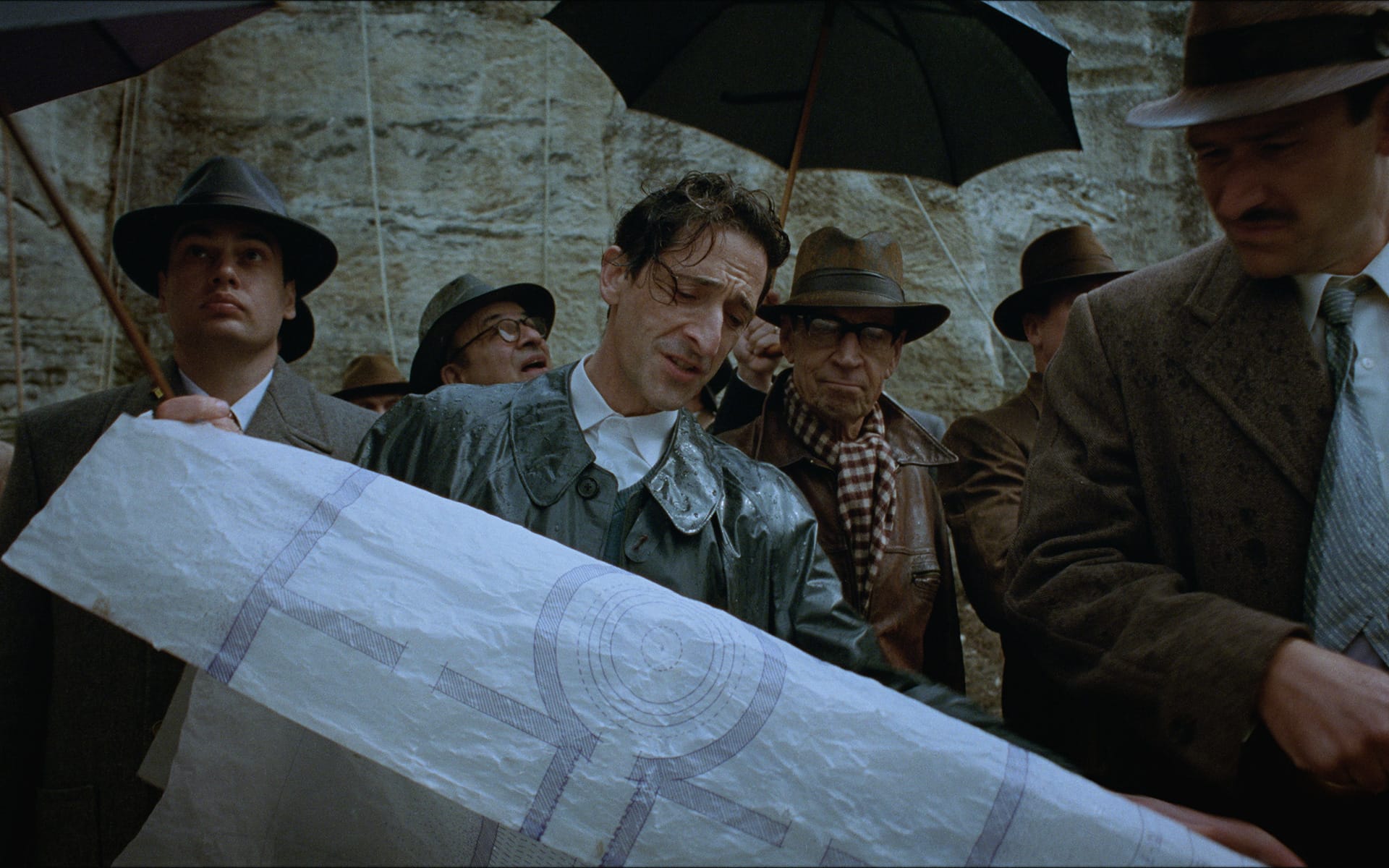Discover How The Brutalist Sourced Inspiration from Marcel Breuer and Bauhaus Design
The period drama is nominated for 10 Academy Awards—including Best Picture

The Brutalist stars Adrien Brody as a fictional Hungarian-Jewish Holocaust survivor and architect named László Toth. The 3.5-hour film is up for 10 Academy Awards, including Best Picture, Best Actor, and Best Director. Galerie spoke to the film’s production designer, Judy Becker, to better understand how the sets of this critically acclaimed film came to life.
Throughout the film, various architectural and interior design styles are referenced. One such example is Bauhaus design, an art movement and school that originated in Germany in 1919. It is characterized by geometric imagery with abstract elements and clean lines. (Think Piet Mondrian’s work, although the Dutch painter was not part of this movement, his work did influence the school and its artists.)

Becker says this design style was a key inspiration behind the decor Toth designed for the furniture store owned by his cousin Attila, played by Alessandro Nivola. “I deliberately [chose Bauhaus design as a source of inspiration] because I thought that at this point in László’s life, when he’s pretty much depleted of everything after having spent years in a concentration camp, he would have returned to his early training in the Bauhaus, and that would have been all that’s really left of his creativity and his sort of creative forces,” explains Becker.
This is also why Toth utilized tubular steel for his furniture creations, as this was a material he would have learned about during his training in the Bauhaus style. Additionally, Becker browsed a “comprehensive catalog of 20th-century furniture to make sure that [Toth’s furniture designs] were different” from those that already existed.

But the library of fictional industrialist Harrison Lee Van Buren’s 18th-century mansion was renovated to be more of a mid-century modern interior. Attila and Toth were tasked with this project, as this particular design style was gaining popularity in the U.S. at the time. Becker adds, “I think it can be called mid-century functionalism. It’s just very simple, you know; it’s not brutalism, and it’s not Bauhaus, but it’s sort of this midway point between the two.”

Another notable source of inspiration was Hungarian-German architect Marcel Breuer; specifically, the interiors of his own homes. New Yorkers and design enthusiasts alike may recognize Breuer as the mastermind behind 945 Madison Avenue, which once housed the Met Breuer, and later, acted as a temporary home for the Frick Collection as it underwent renovations.

The guest house on Van Buren’s property, where Toth stays, showcases Breuer’s Brutalist-style aesthetic. “[Breuer] had very simple furniture,” explains Becker, adding, “some of it was made out of plywood, and [he] used cinder blocks as tables, which I loved so much.”
Becker implemented this vision by using a piece of plywood on cinder blocks as a bed in Toth’s niece Zsófia’s room. Additionally, a cinder block table can be spotted in the aforementioned guest house. Breuer enthusiasts may recognize the Long Chair and Cesca Chair as two creations that inspired what Toth crafts in The Brutalist.